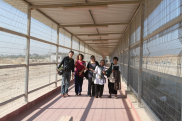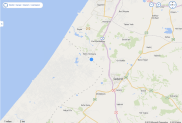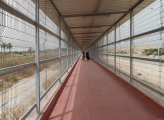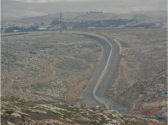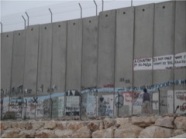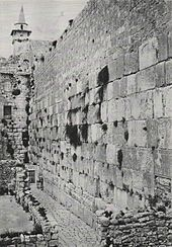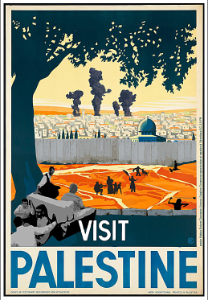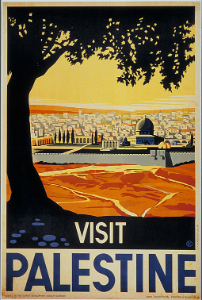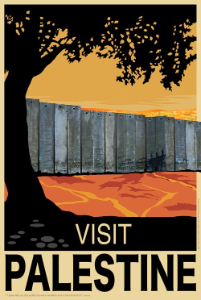Walls of the Middle East
Erez Border Crossing into Gaza, 2011
I (Steve Gilbert) crossed into Gaza at the Erez Border Crossing located in the northern end of the Gaza Strip, on the border with Israel. The process of entry starts in a parking lot fenced off from an imposing-looking building patrolled by young Israelis carrying automatic weapons. Papers are presented and then you are required to wait, luggage in tow, near a guardhouse until called. We were then allowed to pass the first fence/wall and walked past the guards into the main building. Then another wait until called to step into a small locked area in front of a person seated in an adjacent area, similar to a secure bank teller, that questioned the purpose of your trip to Gaza.
Once released you followed a maze that lead to another locked door that was mysteriously unlocked by an unseen person. Then approximately 1 km farther in an enclosed passageway that terminated in a Palestinian controlled check point, with further questions and inspections. The walk from the Israeli check point to Palestinian check point took place within a long narrow hallway that emphasized the separation between two peoples, and the seemingly irreconcilable perspectives.
The wall separating the Palestinian and Israeli people is impossible to grasp without the experience of standing next to it. The majority of the world's people first encounter the wall from the Israeli side and must wonder what evil lurks on the other side of this wall. There must be some rationale for the seemingly thoughtful Israeli people to support building such a monstrous thing that defines and impacts so much space.
The wall defining the West Bank and Gaza was built by the Israeli government under the pretext that this would enhance the security of the Israeli people that live near the Palestinian people. In urban settings the wall is often built with concrete slabs 8 meters (26 ft) above ground with periodic guard towers. Rural areas my be a fence with intrusion detection equipment and no-go areas along the fence. In some areas such as around Gaza there may be a large concrete wall with an exclusion or no-go area on the Palestinian side of the wall, which obviously takes significant land.
The wall is called a "separation barrier" by the Israeli government and "runs partly along or near the 1949 Jordanian–Israeli armistice line ("Green Line") and partly through the West Bank diverging eastward from the armistice line by up to 20 km (12 mi) to include on the western side several of the highly populated areas of Israeli settlements such as East Jerusalem, Ariel, Gush Etzion, Emmanuel, Karnei Shomron, Givat Ze'ev, Oranit, and Maale Adumim. ... Upon completion, its total length will be approximately 700 kilometres (430 mi) and include on the western side approximately 9.4% of the West Bank and 23,000 Palestinians." (Wikipedia)
The Western Wall, Wailing Wall
There is perhaps no wall with as much past and ongoing history as the Western Wall or Wailing Wall in the Old City of Jerusalem. The Western Wall is a small, easily accessible segment of a retaining wall surrounding what is known as the Temple Mount to Jews and Christians, and as the Noble Sanctuary to Muslims. The Temple Mount is considered the holiest of sites in Judaism as it is thought to be closest to the original or first temple. The retaining wall was built around 19 BC by Herod the Great during an expansion of the temple area. The most easily accessible section of the Western Wall is 488 meters long with only half visible above ground at one end of an open plaza. The Western Wall has been a site of Jewish prayer and pilgrimage for centuries, with first recorded mention of its importance to Judaism occurring in the 4th century.
The Wall has been a long-standing source of conflict between Jews and Muslims. Efforts to resolve these conflicts in the 20th century were largely unsuccessful. Jordan took control of the wall after the 1948 Arab-Israeli War and barred the Jews from the site until Israel captured the Old City in the 1967 war. The plaza in front of the wall was created when Israel bulldozed the adjacent 770-year old Moroccan Quarter. Praying at the wall was also restricted to Orthodox men and women were excluded until recently. Praying at the wall usually involves placing a written prayer in a crack in the wall. This wall thus holds an evolving sacred message board for Jews. (Wikipedia)
Most Jews, religious and secular, consider the wall to be important to Judaism since it was originally built to hold the Second Temple.
Barriers to Health Care for Palestinians
Health Under Occupation: Constraints on access to healthcare in the Palestinian Territories by Zahra Bhalwala
Published in Mondoweiss, August 14, 2015
http://mondoweiss.net/2015/08/constraints-palestinian-territories
Walls and Palestine
Posters
from Bombers, Blood, and Teddy Bears: Posters from the 2014 war on Gaza, from Mondoweiss

